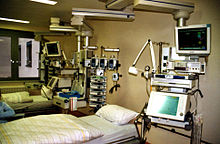A recent study caught my attention, as researchers at Mayo Clinic found a rather surprising population to be more prone to alcohol abuse. It was reported that medical students have double the rate of alcohol abuse than the general public! While the study attributed this increase to high levels of stress, depression, and both emotional and physical burnout, the dangers and risks of overconsumption of alcohol pose their own set of problems.
Upon ingestion, alcohol enters the stomach and small intestine, where it is absorbed into the bloodstream. Thus, a measure of the amount of alcohol in one’s blood, the blood alcohol concentration (BAC), assesses the degree of impairment at various consumption levels. For example, a BAC of 0.35 (35 mg of alcohol in 100 mL of blood) is high enough to cause respiratory arrest, coma, and death. The alcohol travels throughout the circulatory system, and with the heart pumping blood throughout the body, it reaches all the body’s organs.
The following video explains the effects of alcohol upon reaching the brain.

The pathways of alcohol breakdown, or oxidation, are complex, with the liver taking on the major role. In total, over 90% of the consumed alcohol is oxidized by the liver, at a rate of 10 grams per hour. The main enzymes involved are alcohol dehydrogenase (ADH) and aldehyde dehydrogenase (ALDH), which eventually convert alcohol into carbon dioxide and water. Other organs involved in elimination include the kidneys and lungs, with each eliminating around 5% of the ingested alcohol through urinary excretion and exhaling.
The National Alcohol Strategy Advisory Committee (NASAC) has published guidelines for Canadians regarding alcohol consumption. They recommend that males consume no more than three standard drinks per day, to a maximum of 15 per week, while women are recommended to have a maximum of two standard drinks per day, with no more than 10 drinks in one week.
But it seems that Canadians are not following these guidelines. In 2014, The World Health Organization (WHO) released a report revealing that Canadians drink more litres of alcohol than the global average. The average person over the age of 15 consumes 6.2 litres of pure alcohol in the world, while in Canada, the average is 8.2 litres. However, these statistics are more concerning when separated by gender, as males were found to consume three times the global average, with 18.8 litres of alcohol!
Aside from the safety risks associated with impaired mental and physical behaviors, health problems range from inflammation of the stomach and pancreas to high blood pressure, damage to the heart, and stroke. Overconsumption of alcohol can result in a buildup of fat in the liver, known as hepatic steatosis, and permanent scarring called cirrhosis, which ultimately destroys the liver’s ability to function and requires transplantation. Additionally, alcohol weakens the immune system and increases the risk of cancer and nerve damage.
Kerrie Tsigounis






